Disaster at Xichang
An eyewitness speaks publicly for the first time about history’s worst launch accident
/https://tf-cmsv2-smithsonianmag-media.s3.amazonaws.com/filer/Xichang-Main-Gate-Launch-631.jpg)
In October 1994, Bruce Campbell, a safety specialist with Astrotech Space Operations, based near Cape Canaveral, Florida, boarded an airliner in the Chinese city of Chengdu, capital of Sichuan province. He was heading south to the town of Xichang, in the remote mountainous region of the country bordering Burma and Vietnam. Along with a small group of American engineers, Campbell was there to help prepare for the launch, still more than a year away, of an American-built Intelsat satellite on a Chinese rocket.
In the 1990s, U.S. satellite operators were still scrambling to buy rides on European and Chinese launchers following NASA’s decision to ban commercial payloads from the space shuttle in the wake of the 1986 Challenger accident. The Chinese government, determined to succeed in a competitive business, offered Western customers prices they could not refuse. So in 1992, the Intelsat consortium contracted—for a reported $56 million, about half the cost of a European Ariane launch—to send one of its seventh-generation communications satellites, Intelsat-708, into space on China’s still-untested Long March 3B rocket.
Like many of his colleagues, Campbell had the background for working on sophisticated Western technology in remote and unfamiliar places. Born on a U.S. military base in Germany, he had followed in his father’s footsteps by enlisting in the Army, where he trained as a medic. After leaving the Army he got into the aerospace business, where his medical background proved useful in helping to design safety protocols for hazardous operations with spacecraft, including handling toxic propellants.
Campbell, whose company was subcontracted at the time to the satellite builder Space Systems Loral, recalls that first trip to Xichang. After boarding a Chinese Y-7 turboprop airliner (a copy of the Soviet Antonov-24), he sat down next to a young Chinese man. From his window seat, the man kept looking at the landing gear; when it retracted shortly after takeoff, he smiled broadly. “You seem to be very happy,” Campbell said, pointing at the window. “Yes, we studied this landing gear in engineering school,” the man replied. Campbell’s new acquaintance explained that he worked for the China Academy of Launch Vehicle Technology, which oversaw China’s Long March rockets. “Do you fly to Xichang often?” Campbell asked. “No,” the man replied. “It is too dangerous.” Squeezed between the mountains, the Xichang “airport” was actually a military runway housing a squadron of fighters guarding China’s southern border with Vietnam. To land in Xichang, civilian pilots had to perform a dangerous corkscrew maneuver, similar to the spiraling descent military pilots use in war zones.
The visiting U.S. engineers found infrastructure at the space center to be “primitive but workable,” as an Intelsat representative put it later. Intelsat had taken pains to soften the culture shock for its employees and contractors, paying for a top-to-bottom renovation of a small hotel, installing safety equipment, and even sending a pair of chefs from the San Francisco Marriott to cook for the Westerners.
Still, in the year leading up to the launch, Campbell and others were troubled by some of the things they saw and heard during their visits to Xichang. It wasn’t just the worry about espionage and the uncertainty over who might be listening in on them. (Campbell recalls that after he and his colleagues discussed over dinner the lack of a net on the hotel tennis court, a new net magically appeared.) It was more the Chinese attitude toward safety, which the Westerners thought was lax. Members of the U.S. team witnessed or heard from other colleagues about several close calls and accidents. The Intelsat-708 spacecraft was being prepared for launch at a satellite processing building several miles from the pad, which had been repaired after a solid-fuel rocket motor accidentally ignited and started bouncing around wildly in an enclosed room a few years earlier.
In January 1995, a Long March 2E rocket carrying a Hughes Apstar satellite exploded shortly after launch from Xichang. According to Campbell, horror stories from contractors who had witnessed the explosion prompted Intelsat and Loral managers to forbid employees from watching the liftoff from the roof of the hotel, which, along with a large residential area for Chinese employees of the center, was just three miles from the launch pad, and not far off the rocket’s flight path.
On the eve of the Intelsat-708 launch—scheduled for 2:51 a.m. on February 15, 1996—all personnel and guests at the hotel were ordered by Loral to go to the satellite preparation building, located south of the rocket’s expected flight path and separated from the launch pad by steep mountains. Several young local women from the hotel staff, exhausted by a long workday, pleaded to be allowed to stay behind to catch up on sleep, but Loral managers were unyielding—a decision that may have saved the workers’ lives.
***
What Campbell witnessed over the next few days has haunted him ever since. Like most veterans of the Intelsat-708 launch, he hasn’t discussed the event in public. I got to know him while gathering material for a book on the Russian space program, and during one of our many conversations, Campbell mentioned his participation in the 1996 launch. Then he went on to tell the whole story. When I asked why he was willing to talk about it now, he answered, “The truth shall set you free.”
The night of the launch, Campbell and his colleagues at the hotel boarded vans and headed to the satellite processing building. As they passed the center’s main gate, they saw a crowd gathering outside to watch the liftoff. “Everybody was dressed in his or her best clothes,” he recalls. “It was a party atmosphere. There were many dozens, if not hundreds, of people there.” Despite the previous accidents, it seemed to Campbell that these people must have been accustomed to gathering at this spot to watch launches.
During this time, another U.S. engineer in China kept a diary. In it, he describes going for a bike ride with two other Westerners through a picturesque valley flanked by rice paddies and pastures grazed by water buffaloes. (Because he does not have permission from his company to speak on the record, he asked that neither he nor the company be named.) Just a few yards outside the space center, they had seen locals of the Yi culture going about their daily routines, seemingly unaware of the launch to come. “There was a guy sitting in front of his house weaving a basket,” the engineer wrote in his diary. “Scores of villagers walked home on the dirt road as we were riding back.”
After arriving at the satellite processing building, Campbell and the members of the team not directly involved in launch operations went up to the roof to watch the liftoff. The pad, behind a mountain, was out of view, but the rocket was expected to appear above the ridge moments after it cleared the launch gantry. Meanwhile, the engineer who kept a diary was inside, seated in a satellite test room, where he peered at TV screens showing pictures transmitted live from the pad. He planned to rush outside moments after liftoff to see the real rocket. “I figured I could do it in less than 10 seconds,” he wrote. “I had on my bright pink ski hat. I figured it would add festivity to the launch team. Another American specialist wore his lucky shirt and put 2-yuan coins in his penny loafers for more luck.
“The satellite parameters were all good, right down to liftoff. Though the launch window opened at 2:51 [a.m.], the Chinese inserted a nine-minute hold for no reason, so as to lift off at 3:00, a luckier number. At about T-one minute, they decided they needed an extra 45 seconds. Countdown proceeded, though the clocks were all out of sync.”
The rocket began to rise, and the American engineers in the satellite test room ran out the door. “I got out, turned and ran around the building to my best viewing spot, in time to see the mountain lit from behind, hear the startling rumble and see the rocket emerge,” the diary reads. “But instead of rising vertically for nine seconds and several thousand feet [before starting to arc toward the east] I saw it traveling horizontally, accelerating as it progressed down the valley, only a few hundred feet off the ground. ‘Wrong way!’ I yelled, and for the next few seconds I was frozen in my tracks.”
On the roof, Campbell and others were just as perplexed. “All of a sudden, we looked down the valley and saw this huge cruise missile flying by. Our first reaction was This is really interesting. And our next reaction was Holy shit, we need to get off the roof.”
After flying for 22 seconds in the direction of the hotel and residential complex, the 426-ton vehicle crashed into a hillside, most of its propellant still on board. The overstressed payload section with the satellite inside had broken off and plunged to the ground moments earlier.
The diary continues: “It arced toward the earth and I thought I knew what was coming, but the instant of horror that is burned into memory was not anticipated. A tremendous light turned 3 a.m. into noon. Every tree on the hillside was clear as a knife edge, and the sky reflected a weird glow, a color I can not describe…. Many things happened at once. I heard the biggest explosion of my life, I turned and started to run. I saw a friend’s face contorted in Oh shit! I heard a smaller and then a larger boom, I left the ground, I was on the ground, scrambling, wondering why I was down there…. I heard glass breaking and shit was flying everywhere.”
Those on top of the building descended a ladder to the lower roof, and from there scrambled into the building, as the violent shock wave rioted over the facility. A large glass-enclosed entrance shattered into thousands of fragments.
After the blast wave passed, the survivors’ next fear was poisonous fumes produced by the rocket’s toxic fuel and oxidizer. According to Campbell, “We all went into the fueling facility [as the most secure part of the building], had the Chinese shut down all the air conditioning in case the fumes came our way, and set up detectors [for toxic substances], gas masks, and protective equipment for all our [American] people.”
Fortunately, the detectors showed no signs of poison; the wind was blowing the gases away from the building. Phone lines in the battered facility remained operational, and the engineers quickly established contact with their colleagues at the mission control center, perched on the mountain slope some three miles downrange from the site, and with the United States. Back home, stunned engineers, and soon TV viewers around the world, watched footage of the rocket starting to veer off course even before it cleared the tower. To a trained eye, the images also revealed that the rocket’s nozzles were swiveling wildly in an effort to correct the trajectory.
One of the people standing on the roof of the satellite processing building captured the accident on video, even though he was thrown off his feet by the blast wave (the video can still be seen on YouTube). The footage confirms that the rocket crashed just across the road from the hotel for the foreigners. The impact site was right next to the gate of the center, where the large crowd had gathered to watch. Chinese officials claimed that all villagers had been evacuated before the launch, but those claims have been disputed.
The shaken Americans were told that a bus would soon arrive to transport them back to Xichang, but it was repeatedly delayed, and didn’t arrive until well into the afternoon. In the first few hours after the explosion, the stranded engineers were not anxious to leave their relatively secure quarters and go down the valley past the impact epicenter. But suspecting that Chinese authorities were delaying the bus departure to clean up the crash site, Campbell and one of his colleagues could not resist the urge to investigate.
They took vapor detectors, got on their bicycles, and, taking advantage of the road going down into the valley, raced past the armed Chinese guard, who they’d been told had only one bullet in his rifle.
As they approached their hotel, the scale of devastation became fully apparent. In the nearby residential complex, hardly a single structure had escaped damage. At the impact site, several craters punctured the granite mountainside, and the resulting dirt and rocks had buried the railway line below. Just 200 feet to the east of the epicenter, the American hotel and a larger dormitory for Chinese specialists bore the brunt of the blast, though both buildings still stood. But a barbershop and a small market in front of them were flattened.
Campbell and his friend entered their hotel. Practically every door, window, and piece of furniture was destroyed. Air conditioners were hanging by their wires, toilets were thrown into the hallways, and covers of an underground sewage system pierced the floor. Peculiarly, a clock in the lobby was still hanging, stopped at around 3 a.m.
“There were holes in the walls,” Campbell recalls. “In my room, fragments from the rocket were embedded into the backboard of my bed. Anybody who had left their belongings in the hotel would later discover that pieces of cloth had been thrown out the window, only to be sucked into different rooms by the backward-rushing wind that followed immediately after the explosion. Those careless enough to leave their possessions behind found them littering the corridors, the roof, and the courtyard.
Outside, trees were snapped in half or completely uprooted. In a little park in front of the hotel, a monument to ancient Chinese rocketry had been blown off its pedestal.
What Campbell and his friend did not see were human casualties. At the time they reached the residential area, hundreds of Chinese soldiers and military vehicles were flooding the area, and the Americans suspected that one of the their main tasks was to remove bodies. Eyewitnesses in Xichang would later describe many flatbed trucks carrying what appeared to be covered human remains to the military base and hospitals in the town, along with dozens of ambulances.
The bus for the Western engineers finally arrived, and they headed back to Xichang. The route took them through a village just outside the main gate of the launch center, where the road was jammed with vehicles and animals. The passengers were horrified by what they saw. “Every house for several hundred meters was leveled,” observed the diary-keeping engineer.
***
The majority of the American team traveled home within two days of the accident, but Campbell and several colleagues had to stay a few more weeks for the grim task of recovering satellite debris. Their primary goal was to prevent the Chinese from acquiring sensitive technology from the Intelsat satellite.
The morning after the accident, dressed in protective clothing with air bottles, toxicity sensors, and special bags for hazardous materials, they ventured to the crash site. “Shreds of twisted metal were everywhere, like confetti, only composed mostly of steel,” the diarist wrote. To keep the locals from collecting the debris, Chinese army soldiers lined up on the perimeter of the impact area and along the main railway line leading to the complex. “We were there with the Chinese, going over a routine of ‘This is ours, this is yours,’ ” Campbell remembers. “It was surprising how much of [the satellite] survived. The propellant tanks were intact, liquid apogee motor, solar panels, much of the structure...” All the parts were packed up for shipment back to the United States.
The cause of the accident was eventually traced to the rocket’s flight control system, but not before a military official on the Chinese launch team tried to shift the blame elsewhere. Campbell recalls that he “came in, thanked everybody for great friendship and cooperation, and said that ‘Everybody knows that when you light the rocket it goes straight up, so, obviously, outside influences had an effect.’ We all tried not to laugh.”
Two weeks after the accident, Xinhua, China’s official news agency, reported that the Intelsat-708 accident had left six dead and 57 injured. That, in fact, might be a realistic number for the casualties among the technical personnel involved in preparing the mission. We may never know how many local villagers died, although the numbers could easily have run into the hundreds, which would make the accident the worst disaster in launch history.
Since that day, the reliability of Long March rockets has greatly improved, although China never became a major player in the global commercial launch business. Bruce Campbell did go back to China for two successful launches of Loral-built satellites. He discovered that the village that used to border the launch center has disappeared, as if it never existed. There is no memorial to the victims, and their fate has never been mentioned in the state-controlled Chinese press.
/https://tf-cmsv2-smithsonianmag-media.s3.amazonaws.com/accounts/headshot/AnatolyZak.jpg)
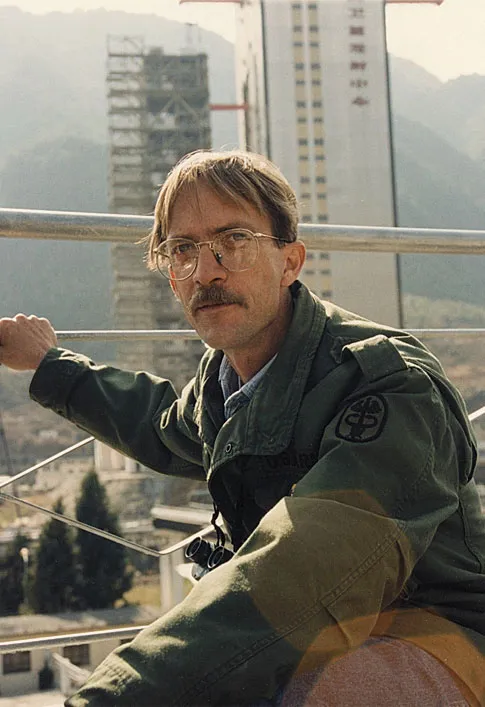

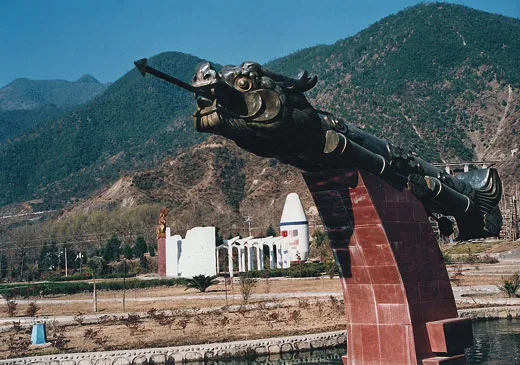
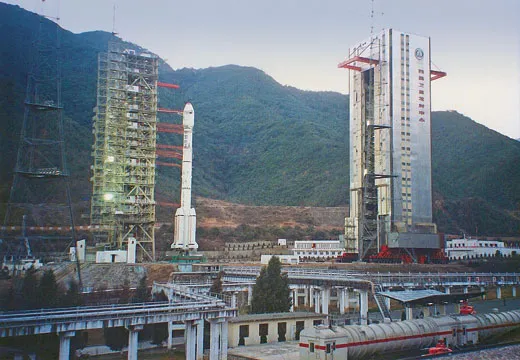

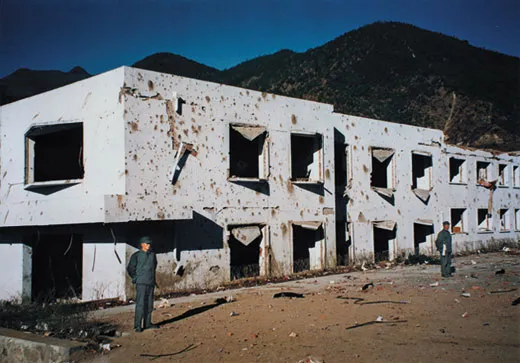
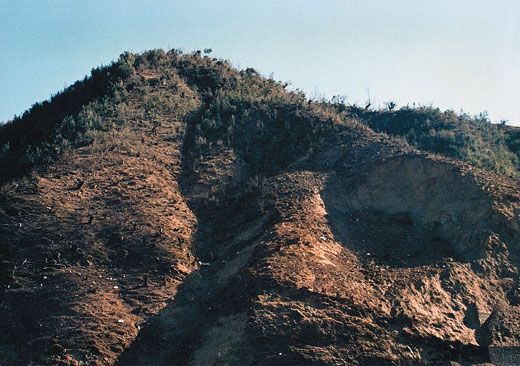
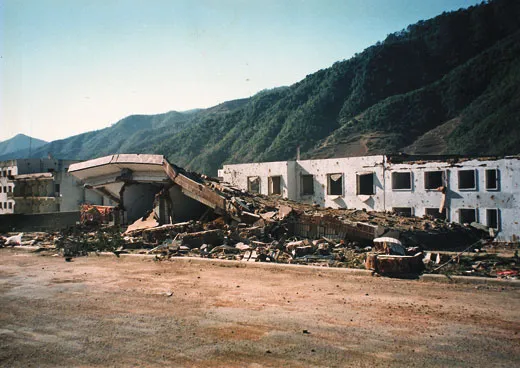
/https://tf-cmsv2-smithsonianmag-media.s3.amazonaws.com/accounts/headshot/AnatolyZak.jpg)